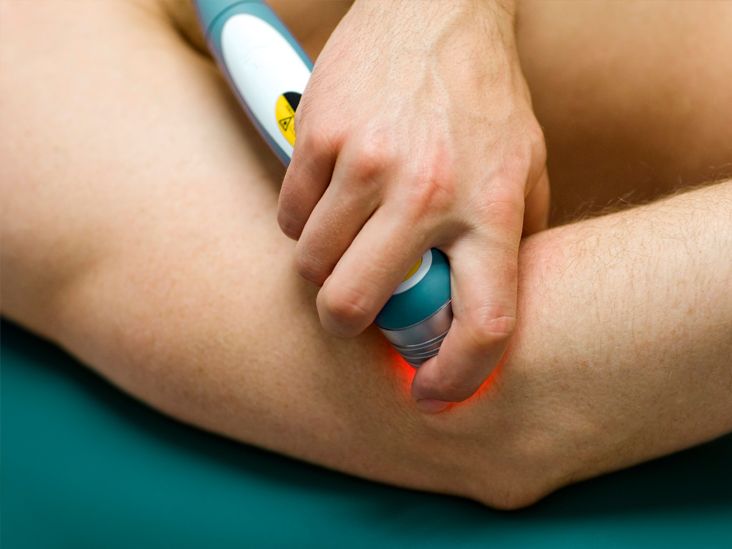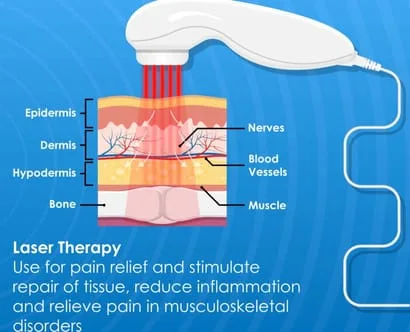Exploring Laser Therapeutic Developments: Beyond Traditional Clinical Therapies
Wiki Article
The Role of Medical Laser Treatment in Injury Recovery and Cells Regeneration
Did you know that medical laser treatment has the prospective to reinvent injury recovery and tissue regrowth? Whether you're dealing with persistent injuries, surgical lacerations, or tissue damages, laser treatment may offer the mild yet effective intervention you need. In this overview, we will check out the duty of medical laser therapy in injury recovery and cells regeneration, reviewing its benefits, strategies, devices, as well as its constraints and considerations.Comprehending Medical Laser Therapy
If you often struggle with injuries or tissue damages, it is very important for you to comprehend exactly how medical laser therapy can help in speeding up the recovery procedure (medical laser therapy). Clinical laser treatment is a non-invasive therapy that makes use of concentrated light to stimulate mobile task and promote cells repair work. The laser emits a particular wavelength of light that is soaked up by the cells in the targeted area, triggering a series of biological feedbacks that help with healingOne of the primary benefits of medical laser treatment is its capacity to reduce swelling. By targeting the damaged location with the laser, it can help to decrease swelling and pain, allowing for faster recovery. The laser additionally boosts the manufacturing of collagen, a key component in injury recovery, which helps to enhance and reconstruct damaged cells.
Clinical laser therapy can be used to treat a variety of conditions, consisting of wounds, burns, muscular tissue pressures, and joint discomfort. It is a risk-free and effective treatment option, with marginal adverse effects. laser therapy light. Numerous clients report feeling a cozy, relaxing sensation during the therapy, and experience immediate pain alleviation
Benefits of Laser Treatment for Injury Healing
Using medical laser therapy for wound healing offers several advantages that can expedite the healing procedure. Among the main benefits is that laser treatment aids to lower pain and swelling related to injuries. The laser energy boosts the release of endorphins, which are all-natural pain relievers, giving prompt relief. In addition, the laser likewise aids to decrease swelling and soreness, promoting faster healing.One more advantage of laser therapy is its capability to boost blood circulation to the wounded location. The laser light increases the development of new members vessels, boosting oxygen and nutrient supply to the damaged tissues. This increased blood flow promotes the removal of waste items and toxins, even more sustaining the recovery process.
Laser treatment also helps in the formation of collagen, an important component of injury recovery. The laser promotes fibroblast task, which are cells in charge of collagen manufacturing - laser light therapy. Collagen aids to strengthen the wound and promote the development of brand-new tissue, leading to faster wound closure
Furthermore, laser treatment has actually been revealed to have antimicrobial effects, assisting to stop infections in injuries. The laser power kills germs and various other bacteria, lowering the risk of issues and making sure a tidy setting for recovery.
Laser Treatment for Cells Regeneration
To promote tissue regeneration, medical laser therapy can be made use of together with other treatment methods. Laser therapy has actually been shown to stimulate the production of growth elements and enhance the healing process. It works by delivering focused light energy to the targeted area, which can penetrate deep right into the cells and promote cellular task.
Additionally, laser therapy can additionally promote collagen synthesis, an important component of tissue regeneration. Collagen supplies architectural support and assists in the formation of laser therapy new cells. Laser treatment promotes fibroblasts, the cells in charge of collagen manufacturing, causing raised collagen synthesis and enhanced cells regrowth.

Methods and Tools in Laser Treatment
When utilizing clinical laser treatment for wound recovery and cells regrowth, it is essential to understand the techniques and equipment entailed. One generally utilized technique is recognized as low-level laser treatment (LLLT) or chilly laser therapy. An additional strategy is high-intensity laser therapy (HILT), which utilizes higher power lasers to supply restorative impacts deeper into the cells.In terms of devices, laser treatment tools come in different types. These tools are portable, very easy to use, and enable for specific application of laser therapy. Some laser therapy tools likewise integrates innovative features such as adjustable power setups, various wavelengths, and built-in safety and security steps.
Comprehending the strategies and tools made use of in clinical laser treatment is critical for healthcare experts to supply risk-free and efficient treatments. By keeping up to date with the most up to date improvements in laser therapy methods and equipment, health care carriers can proceed to improve wound healing and cells regeneration outcomes for their people.
Limitations and Considerations in Laser Treatment
One vital factor to consider in laser treatment is the possible constraints that medical care experts ought to recognize. While laser treatment has actually shown promising cause injury healing and cells regrowth, it is not without its restrictions. One limitation is the deepness of penetration. Different laser wavelengths have differing degrees of penetration, and this can influence the performance of the treatment. Lasers with shorter wavelengths might have limited infiltration and may not be suitable for dealing with deeper injuries or cells.Another restriction is the possibility for damaging impacts. Laser treatment, when not used effectively, can cause burns, discomfort, and cells damages. It is essential for medical care experts to have the essential training and experience to guarantee secure and reliable therapy. In addition, certain patient attributes, such as skin kind, sensitivity, and underlying medical problems, require to be thought about to minimize the risk of negative results.
Cost is one more consideration in laser treatment. The tools needed for laser treatment can be pricey, and the price might restrict its ease of access in particular healthcare settings. In addition, the maintenance and functional expenses of the devices should be thought about when considering the usefulness of applying laser treatment.
Verdict
In conclusion, clinical laser treatment plays a substantial role in wound recovery and cells regeneration. With its countless advantages, such as accelerated healing, reduced pain, and minimal scarring, laser treatment has actually verified to be an important treatment option.In this overview, we will discover the role of medical laser treatment in injury healing and tissue regeneration, reviewing its advantages, techniques, tools, as well as its considerations and constraints.When using clinical laser therapy for injury recovery and tissue regeneration, it is vital to recognize the techniques and equipment entailed. One commonly utilized method is recognized as low-level laser treatment (LLLT) or cool laser treatment. An additional method is high-intensity laser treatment (HANDLE), which uses greater power lasers to supply therapeutic impacts deeper right into the cells.In conclusion, medical laser therapy plays a substantial duty in wound recovery and cells regrowth.
Report this wiki page